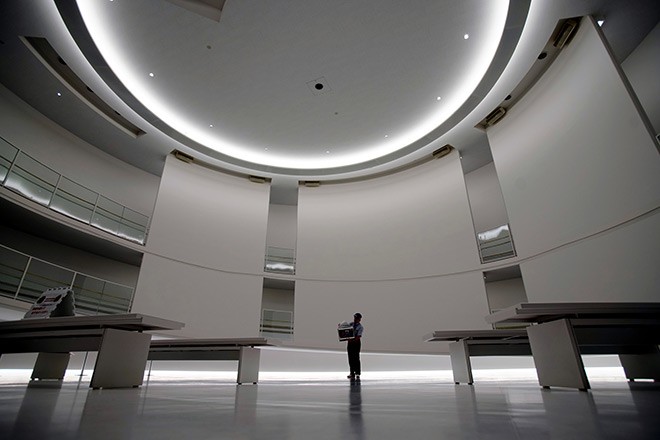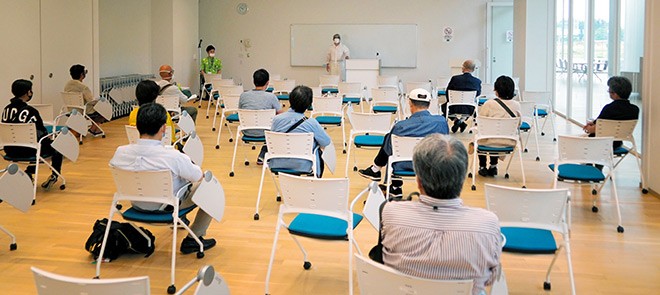
Don’t criticize government or TEPCO, guides in Fukushima told
Posted: 24th September 2020
THE ASAHI SHIMBUN
September 23, 2020 at 18:19 JST
Tour guides are bristling at instructions not to criticize the central government or Tokyo Electric Power Co. when speaking to visitors at a recently opened memorial museum to the 2011 triple meltdown at the Fukushima No. 1 nuclear power plant.
The instructions have left some Fukushima residents who signed up to be guides feeling perplexed and sparked anger in others.
The museum in Futaba, Fukushima Prefecture, opened on Sept. 20 with the objective of passing on to visitors the lessons learned from the nuclear disaster triggered by the Great East Japan Earthquake and tsunami.
It was constructed by the Fukushima prefectural government in the town of Futaba, which co-hosts the nuclear plant. Evacuation orders issued for residents following the disaster were recently partially lifted.
About 150 items chosen from the 240,000 or so materials collected from around the nation are on display at the facility operated by the Fukushima Innovation Coast Framework Promotion Organization. The central government effectively paid for the 5.3 billion yen ($50 million) that went into completing it.
The museum has 29 registered guides who either survived the 2011 disaster or underwent a training program for the work. They rotate on a daily basis and talk to visitors about their experiences, which include how they lived while living as evacuees and losing their homes in the tsunami.
Each session lasts for a maximum one hour and the guide is paid 3,500 yen for each session.
Training sessions were held in July and August for the guides in which a manual was distributed that included wording to avoid “criticizing or defaming specific organizations, individuals or other facilities.”
One question raised was what to say if a visitor asked what the guide felt about TEPCO’s responsibility, according to several guides who took part in the training sessions.
The guides were told to not directly respond to such questions, but to leave the matter up to facility staff who would be sitting in on the sessions.
Each guide was also asked to write down a script of what they intended to say. The draft was checked and revised by facility staff.
The guides were also told that if they did criticize a specific organization, their talks would be stopped immediately and they would be dismissed as a registered guide.
The manual also included instructions to contact and consult with facility staff if the script was to be changed or if the guide was contacted by media representatives for an interview.
With regard to the manual and instructions, one guide said, “While defamation is out of the question, I think it is wrong that as a victim I am unable to criticize the central government or TEPCO, which is responsible for the damage.”
A second guide had the script revised after pointing out the responsibility of the central government and TEPCO.
Another speculated that the Fukushima prefectural government was not trying to ruffle feathers since the central government had paid for the facility.
“I suffered psychological anguish from TEPCO and I’m also angry with the central government,” one tour guide said.
“To me, that is the truth. The facility has asked us to speak the truth so it is not in a position to say ‘Don’t say such things.’ I will quit as a guide if expressing my feelings is considered being critical.”
A prefectural government official admitted that the central government and TEPCO would be covered by the “specific organizations” clause in the manual.
“We believe it is not appropriate to criticize a third party such as the central government, TEPCO or the Fukushima prefectural government in a public facility,” said another prefectural government official now on the facility staff.
Committees set up by the Diet and central government to investigate the cause of the Fukushima nuclear disaster issued reports that called it a “man-made disaster” and said TEPCO never considered the possibility that the Fukushima plant would lose all electric power sources in the event of an earthquake or tsunami because it stuck to a baseless myth that the plant was safe.
(This article was written by Shoko Rikimaru and Shinichi Sekine.)


